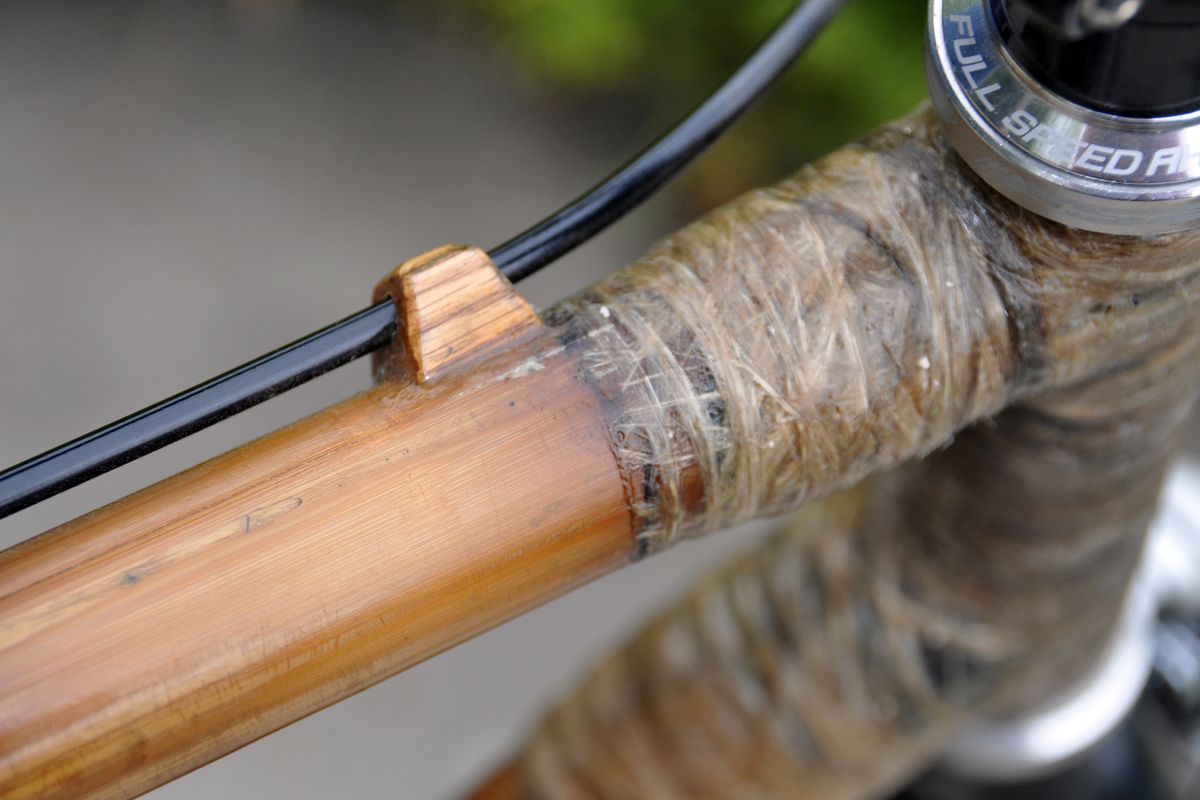Extreme wheel men: Bamboo bike

Paul Fish wasn’t out to save the world or make it as a local frame builder when he built a bamboo bicycle. He just wanted to see if he could do it.
The Spokane man launched the whim with the same sense of observation he applied a few decades ago to building backpacks, a vocation that led him to founding Mountain Gear, a successful retail and online outdoor equipment company.
“Don’t get any ideas,” Fish said. “I like my new bamboo bike, but I’m not going anywhere as a bike builder.”
Some proponents have billed bamboo bikes as
cheap, light, no-rust options for putting more cycles into service around the world.
“I’ve got a good bike,” Fish said. “I don’t need a bamboo bike. I just wanted to build one.” First he negotiated a few steep learning curves.
“I used a torch for tempering the bamboo,” he said, noting that some of his poles developed cracks from the heat.
“Impatience is a bad thing when you’re working with a torch.”
He also found out that each segment of a bamboo pole is well-sealed at the joint. “Do you know what happens when you don’t punch a hole in the nodes of a bamboo pole before applying the torch? The pole explodes.”
While time consuming, these weren’t costly mistakes, he said. “I found a place I could buy good, straight, 6-foot bamboo poles for about $80 a case, including shipping. That’s enough to build three or four bikes if everything goes right.
“I figured all I had to do was cut, miter, glue, and wrap them – sounds easy, doesn’t it?
“I tried to just draw a design and put it together, but my first attempt resulted in a bike sized for somebody about 8 feet tall with a 30-inch inseam. You could say the dimensions were a little off.”
Trial and error made him even more determined to build a bamboo bike that worked like a bike.
He found inspiration and specifics on the Bikecad website, www.bikecad.ca, to help design and measure the tube lengths and angles.
“It’s a good place to start the dreaming and come up with something that might work,” he said.
Then he tapped the expertise of machinist and local bike frame builder Gary Selner of Hairy Gary Bicycles.
“He took me to his basement shop and showed me a few things,” Fish said.
Fish merged his bamboo tubes into metal components, including the head tube, bottom bracket, seat tube clamp and wheel dropouts.
“Of course, the fork is metal,” he said. “You have no margin for error there or you’re on your face.”
His investment amounted to about $50 for the metal components and maybe $20 of hand-picked bamboo. Then you need resin, carbon fiber and hemp to wrap the joints.
“I probably spent about $200 on materials and I have enough leftover to get a start on building another frame.”
His first bamboo frame finally came together last week.
The frame alone weighed 3.35 pounds. The entire bike is about 18 pounds.
“I was tentative when I first got on it,” he said. “It felt a little soft. Breaking a frame while riding wouldn’t be a good thing.”
He quickly made mental notes on which tubes and stays he might replace with shorter, thicker bamboo to give the frame more stiffness and less torque.
But he bravely continued the test drive. He mustered the guts of a test pilot and let his bamboo machine freewheel to 25 mph on a steep downhill.
Conclusion: “It rides like a bike.”
But after numerous friends eagerly tried out the bike, he noticed a hairline crack had developed in the top tube.
“I should be able to replace it,” Fish said.
“I’ll cut it out, put in a new, thicker tube, epoxy it in place, layer in some carbon fiber and hemp. It will be fine.”
He put about 50 hours of labor into the bike and figures he learned enough to do the next one in about 30 hours. Gaining efficiency will be important.
While he doesn’t plan to become a frame builder, demand is up and the pressure is on.
“Six members of my family all want me to build them a bamboo bike,” he said. “I think I goofed up. I said I would.”